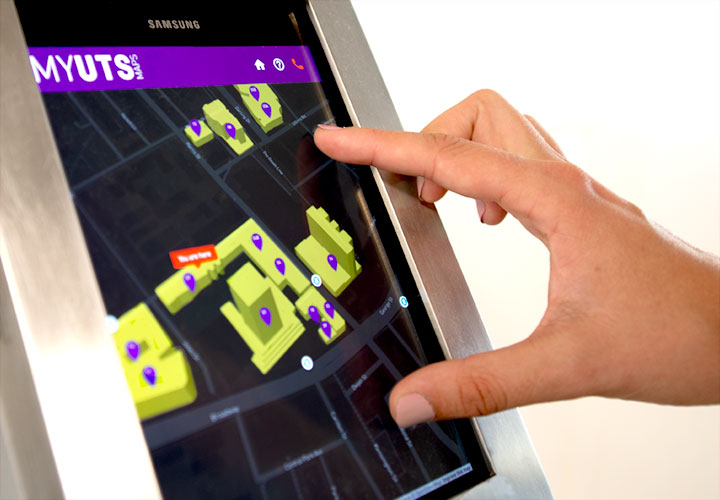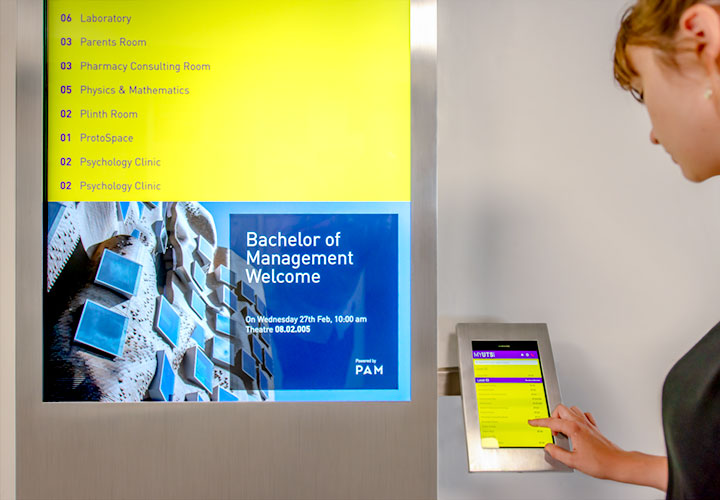Digital wayfinding can deliver truly engaging visitor experiences by providing useful information in real-time – but navigating the latest tech is tricky territory.
This month, at universities around Australia, tens of thousands of students attended Orientation Week. For BrandCulture, it was wonderful to see our vision for a digitally connected campus come into play at the University of Technology Sydney.
On O’Day, thousands of students were finding their way around campus for the time. Of course, BrandCulture has been working with UTS for many years. We were originally engaged to implement 8,000 signs across 19 buildings and 110 floors – no mean feat! More recently, we’ve been helping the university to enhance the student experience through digital signage design.
A digital handshake via real-time wayfinding
Conceptually, we set out to put the campus in the palms of students’ hands using digital directories powered by touchpads, 3D maps, QR codes and a content management system that enables live updates. Students can now access real-time information about events and venues on digital screens – and then scan a QR code to take personalised maps with them on their mobile devices.
“Digital wayfinding enables us to design personalised journeys and provide more context than ever before,” explains Stephen Minning, Managing Director at BrandCulture.
“Think of it as a real-time digital handshake. By giving students access to interactive 3D maps they can take with them on their phones, we are putting the campus in the palm of their hands. UTS wanted to use digital technology to fully enable the student experience, true to their vision of being a world-leading university of technology. Digital wayfinding technology also empowers the university’s marketing team to showcase events and marketing messages, so it’s a very powerful communications tool.”
Staying abreast of real-time digital wayfinding technology
At BrandCulture, we’re always keeping an eye on the latest wayfinding innovations. We attend Integrate, Australia’s annual audio-visual and integration trade show. We keep a close eye on the tech coming out of CES in Vegas, which takes place every January. We are also big fans of SEGD’s Xlab, which explores the cutting edge of experience design.
Some of the technology displayed at this year’s CES could have huge implications for wayfinding and experiential designers. There was lots of buzz around voice-assisted technologies like Interpreter – a new feature for Google Assistant, which can translate conversations into 27 languages via onscreen text or voice. It’s easy to imagine Interpreter being integrated into real-time digital wayfinding signage to provide directions to international visitors.
But before you rush out to invest in the latest 8K screens and hardware, it’s worth consulting a wayfinding studio for guidance. More likely than not, you won’t need to buy the most expensive and newest tech, or the highest-resolution screens. A digital screen and touchpad may be all you need to provide real-time directions and up-to-the-minute information about events and venues.


